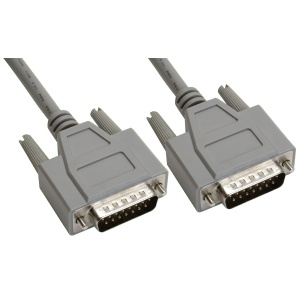Introduction
Have you ever wondered what it takes to set up an efficient telecommunications network? Or why some networks offer seamless communication while others lag? It’s all about the setup. It’s no small feat, but with the right guidance, you can navigate the process like a pro. Whether you’re a small business owner looking to establish a new network or an IT professional tasked with revamping an existing system, this comprehensive guide will steer you in the right direction. So, buckle up and let’s get started!
The Initial Blueprint – Planning Your Telecommunications Network
A wise person once said, “Failing to plan is planning to fail.” When it comes to setting up an efficient telecommunications network, this adage holds true. The initial planning phase is crucial in determining the success of the network. Let’s dive into what this involves:
Identifying Your Needs
Before you jump into setting up your network, it’s important to pinpoint your specific requirements. What is the purpose of your network? What type of data will it handle? How many users will be accessing it? Answering these questions will help you shape a network that suits your needs.
Scalability and Future Growth
While setting up the network, consider the future growth of your company. Plan for scalability so that as your organization grows, so does your network. Trust me, you don’t want to be caught off-guard when your network capacity is suddenly insufficient.
Budgeting and Resource Allocation
Money matters! Define your budget early in the process and allocate resources accordingly. This might be a tough pill to swallow, but it’s essential to avoid financial headaches down the line.
Choosing the Right Equipment for Your Telecommunications Network
Choosing the right equipment is like picking the right ingredients for a recipe. You want to make sure that all the components will work together seamlessly. But how do you pick the right ones? Here’s how:
Understanding Different Types of Network Equipment
Switches, routers, modems – oh my! Understanding these components and their roles is the first step in choosing the right equipment for your network.
The Importance of Quality Equipment
Investing in high-quality equipment may seem like a big ask, but it’s a price worth paying. Quality equipment offers better performance, higher reliability, and longer lifespans.
Buying vs. Leasing Equipment
This age-old debate rages on in the telecommunications world too. Should you buy your equipment outright or lease it? We’ll weigh the pros and cons to help you make an informed decision.
Setting Up the Telecommunications Network
Once you’ve planned and procured your equipment, it’s time for the rubber to hit the road. Setting up the network involves several crucial steps:
Installation and Configuration
Getting your network up and running involves more than just plugging in equipment. Configuration is key to ensuring your network operates efficiently.
Network Security Measures
With cyber threats lurking around every corner, you can’t afford to skimp on security. We’ll explore different security measures you can take to safeguard your network.
Testing and Troubleshooting
Before you give your network the green light, it’s important to test it thoroughly. This will help you identify and resolve any issues early on.
Maintaining an Efficient Telecommunications Network
Building a network is one thing, but maintaining its efficiency is another ball game altogether. Here’s how you can keep your network running like a well-oiled machine:
Regular Network Monitoring
Keeping an eye on your network can help you spot potential issues before they spiral out of control. Discover why regular network monitoring is a must.
Software and Hardware Updates
To maintain efficiency, it’s essential to keep your software and hardware updated. We’ll explain why this is important and how you can manage it without disrupting your operations.
Handling Network Outages
Even with the best planning and maintenance, network outages can happen. Learn how to handle them like a pro and minimize downtime.
Frequently Asked Questions
- What is a telecommunications network? A telecommunications network is a group of nodes and links that facilitate communication. These networks can range from small office networks to vast global networks.
- How does a telecommunications network work? A telecommunications network works by transmitting data from one point to another. This data can include voice, video, text, and more.
- What are the key components of a telecommunications network? The key components of a telecommunications network include switches, routers, modems, and transmission lines.
- What factors affect the efficiency of a telecommunications network? Several factors can impact network efficiency, including the quality of equipment, network configuration, and regular maintenance.
- What is the importance of regular network monitoring? Regular network monitoring helps identify potential issues early, reducing the risk of severe problems or outages.
- How can I improve the efficiency of my telecommunications network? You can improve your network’s efficiency through regular maintenance, keeping your software and hardware updated, and implementing efficient network configurations.
Conclusion
Setting up an efficient telecommunications network may seem like climbing a mountain, but with careful planning, the right equipment, and proper maintenance, you can reach the summit. Remember, the journey of a thousand miles begins with a single step. So, take that first step today and set the stage for a robust, efficient telecommunications network.












